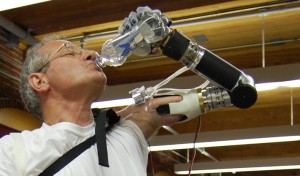John Oliver takes on climate change, with a bit of help from Bill Nye.
“I think I know why people think this issue is open to debate. Because on TV, it is.”
A geek at the peak, in a world at the peak
John Oliver takes on climate change, with a bit of help from Bill Nye.
“I think I know why people think this issue is open to debate. Because on TV, it is.”
 The mystery of MH370’s disappearance seemed to have been solved when Inmarsat used satellite ping data to narrow down its last known location, but a deep sea sonar search of the area has yielded nothing (even though a few audio pings were heard that may have been the plane’s black boxes). Investigators are re-examining all data, and this is raising questions about Inmarsat’s calculations and assumptions. There’s a really fascinating article at The Atlantic that talks about this in great detail…how the location is determined, and what some concerns are about the conclusions reached to date. Cool stuff, and worth reading (quick summary – the conclusions don’t appear to align with the data, and need further explanation).
The mystery of MH370’s disappearance seemed to have been solved when Inmarsat used satellite ping data to narrow down its last known location, but a deep sea sonar search of the area has yielded nothing (even though a few audio pings were heard that may have been the plane’s black boxes). Investigators are re-examining all data, and this is raising questions about Inmarsat’s calculations and assumptions. There’s a really fascinating article at The Atlantic that talks about this in great detail…how the location is determined, and what some concerns are about the conclusions reached to date. Cool stuff, and worth reading (quick summary – the conclusions don’t appear to align with the data, and need further explanation).
Adding to the confusion is a geological survey company’s findings in the Bay of Bengal, which they say appears to be a large aircraft at the bottom of the sea, where previous data had showed nothing. They used a really cool technology…essentially, the data shows what elements are found on the sea floor, and this shows large concentrations of aluminum and other key elements. However, their findings are being mostly ignored, apart from a couple countries in the area that have dispatched ships to check things out.
Looking ahead…Inmarsat has offered to provide a free tracking service to all passenger airlines, though international agencies like the ICAO and IATA are currently discussing what to do about plane tracking.
 Dean Kamen’s DEKA R&D Corporation has been working on an advanced prosthetic arm for many years, and has just received FDA approval. Next step is to find a manufacturing partner, then they can bring this device to market and provide a level of functionality not before available to amputees. This arm is controlled by electrodes placed on the remaining portion of a wearer’s arm, and translates those signals into actions in the arm, and is the first of its kind to be able to perform multiple simultaneous robotic actions. It may sound mundane..but this arm has enough control to allow users to pick up even fragile objects like grapes and eggs without breaking them, giving their users enormous gains in ability.
Dean Kamen’s DEKA R&D Corporation has been working on an advanced prosthetic arm for many years, and has just received FDA approval. Next step is to find a manufacturing partner, then they can bring this device to market and provide a level of functionality not before available to amputees. This arm is controlled by electrodes placed on the remaining portion of a wearer’s arm, and translates those signals into actions in the arm, and is the first of its kind to be able to perform multiple simultaneous robotic actions. It may sound mundane..but this arm has enough control to allow users to pick up even fragile objects like grapes and eggs without breaking them, giving their users enormous gains in ability.
Check out the video below from 60 minutes to get a better sense of what this arm is all about:
There’s a new category of genetically modified crops on the horizon that utilize a technique known as RNAi, or RNA interference. For a recap of what RNA does, check out wikipedia, but in summary: it’s primarily a messenger, carrying instructions from DNA to control the synthesis of proteins. RNAi is an attempt to interfere with this process; an insect (the corn root worm, in this case) takes up small siRNA (small interfering ribonucleic acid molecules) from a corn plant, which then turn off the production of critical proteins in those pests, killing them. It’s a pretty amazing technology, and one that’s also being explored in the fight against cancer, to interfere with cell division of cancerous cells.
So there lies the concern. The medical field is looking at ways to help the human body absorb those siRNA molecules. The food industry wants the opposite, for there’s justifiably a lot of uncertainty and concern about the effect this may have on the body. Some scientific studies have indicated that the body might be absorbing this, most find no evidence of that. It seems much of the uncertainty comes from the difficulty in detecting these very small molecules in the first place. There is also uncertainty about what other insects may be harmed by this (one study found that ladybugs were one victim). On the plus side, this has the potential to reduce or eliminate two techniques currently employed – spraying crops with Roundup (that then gets into our food supply), or using corn that is genetically modified to produce BT Toxin (which we then consume).
Monsanto is convinced they’ve studied the issue enough, and have applied for approval to sell this new corn variant. There still seems to be quite a bit of valid scientific debate over that subject…but if history has taught us anything, it’s that big business will win out over science and public health concerns.
You can read more about this at the NY Times or in the Boulder Weekly.
I’m stuck in a contract with Verizon, but if you’re shopping for a new cell phone, I found a cool site called WhistleOut that helps you compare plans for the US, UK, New Zealand, and Australia. I liked the UI, where you can select the type of phone, how many minutes, data, texts you want, etc. Even lets you indicate whether throttled data speeds is OK (after a certain baseline amount).
Proudly powered by WordPress | Theme: Baskerville 2 by Anders Noren.